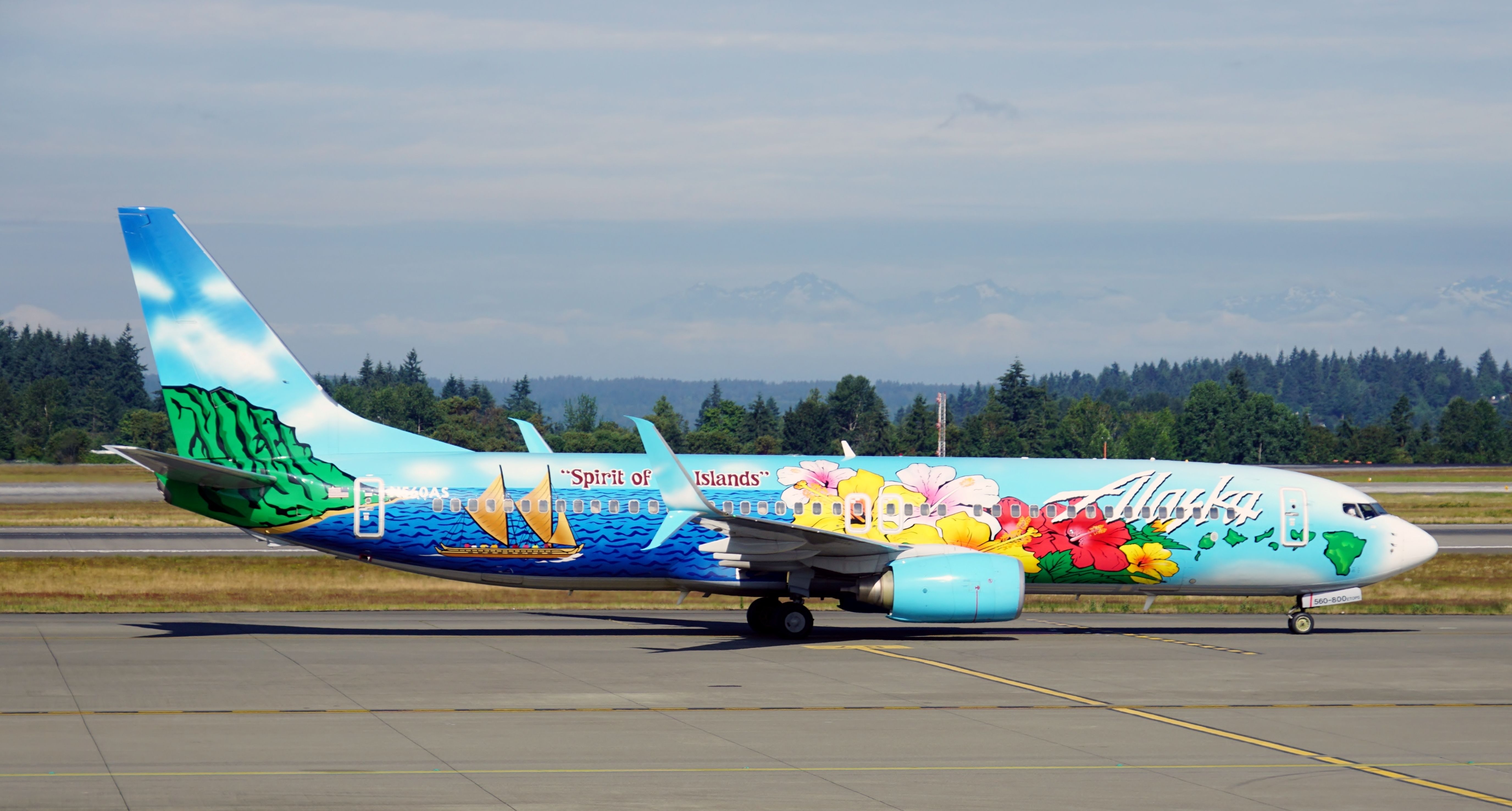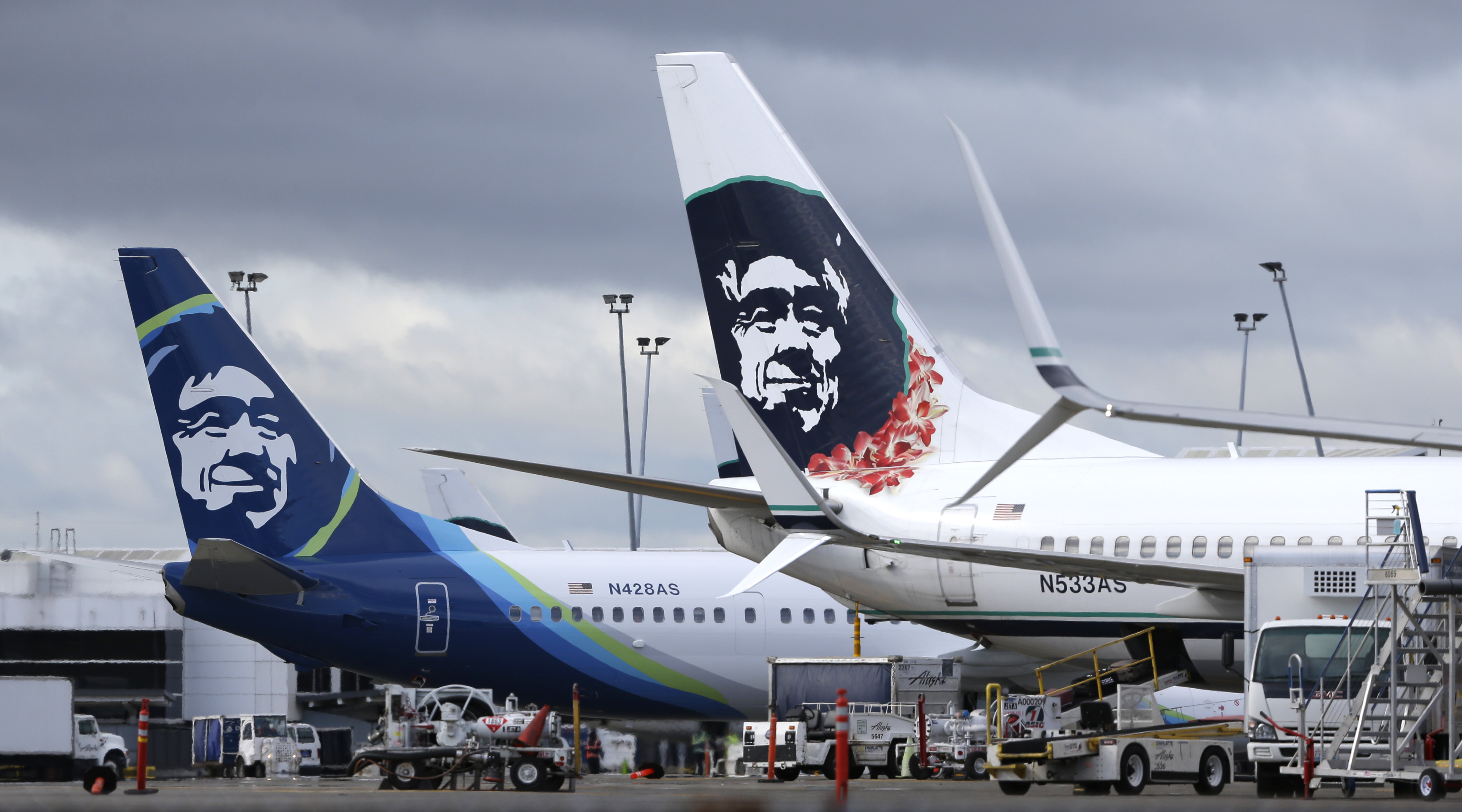Hawaiian Airlines and Alaska Airlines: Hawaiian Airlines Alaska

Hawaiian Airlines and Alaska Airlines are two prominent airlines in the United States, serving diverse markets and catering to different customer segments. This analysis delves into the history, key milestones, and current market positioning of both airlines, highlighting their strengths and weaknesses.
Historical Background and Founding Principles
Hawaiian Airlines, founded in 1929 as Inter-Island Airways, has a rich history rooted in serving the Hawaiian islands. Its initial focus was on connecting the islands with air transportation, contributing to the development of tourism in Hawaii. Alaska Airlines, established in 1932 as McGee Airways, initially served Alaska’s interior regions. The airline’s early focus was on providing essential transportation services to remote communities and connecting Alaska with the contiguous United States.
Key Milestones and Growth Strategies
- Hawaiian Airlines:
- 1940s: Expansion to the mainland United States, connecting Hawaii with major cities like Los Angeles and San Francisco.
- 1990s: Acquisition of Aloha Airlines, consolidating its position as the dominant carrier in Hawaii.
- 2000s: Focus on international expansion, adding routes to Asia, Australia, and New Zealand.
- Alaska Airlines:
- 1970s: Expansion beyond Alaska, adding routes to the Pacific Northwest and California.
- 1980s: Acquisition of Horizon Air, expanding its regional network.
- 2000s: Merger with Virgin America, expanding its presence in the West Coast and increasing its focus on low-cost service.
Current Market Positioning and Target Customer Segments
- Hawaiian Airlines:
- Route Network: Primarily focuses on inter-island flights within Hawaii, with a strong presence on routes between Hawaii and the mainland United States, particularly California. Also operates routes to Asia, Australia, and New Zealand.
- Target Customer Segment: Caters to leisure travelers seeking a Hawaiian experience, including honeymooners, families, and adventure enthusiasts. Also serves business travelers seeking connections to the Pacific region.
- Brand Image: Known for its warm Hawaiian hospitality, emphasis on cultural experiences, and connection to the islands.
- Alaska Airlines:
- Route Network: Extensive network across the Western United States, including Alaska, California, Washington, Oregon, and Arizona. Also serves major cities in the Eastern United States and Mexico.
- Target Customer Segment: Focuses on both leisure and business travelers, offering a wide range of destinations and connecting services. Emphasizes value-driven services and convenience.
- Brand Image: Positioned as a reliable and efficient airline, known for its focus on customer service and its commitment to sustainability.
Strengths and Weaknesses
- Hawaiian Airlines:
- Strengths: Strong brand recognition in Hawaii, unique cultural experience, robust inter-island network, growing international presence.
- Weaknesses: Limited network outside Hawaii, dependence on tourism, potential vulnerability to economic fluctuations.
- Alaska Airlines:
- Strengths: Extensive network across the West Coast, strong focus on customer service, efficient operations, commitment to sustainability.
- Weaknesses: Limited international presence, potential competition from low-cost carriers, reliance on regional connections.
Customer Experience and Service Offerings

Both Hawaiian Airlines and Alaska Airlines strive to provide a positive and memorable travel experience for their passengers. They offer a range of services and amenities designed to enhance comfort and convenience throughout the journey. This section will delve into a comparative analysis of their customer experience offerings, focusing on loyalty programs, baggage allowance, in-flight entertainment, and onboard services.
Loyalty Programs
Loyalty programs are designed to reward frequent flyers and encourage customer loyalty. Both airlines offer their own programs with distinct features and benefits:
- Hawaiian Airlines’ HawaiianMiles program offers miles that can be redeemed for flights, upgrades, and other travel-related perks. Members can also enjoy priority check-in, baggage handling, and boarding.
- Alaska Airlines’ Mileage Plan allows members to earn miles on flights, hotel stays, car rentals, and other purchases. These miles can be redeemed for flights, upgrades, and merchandise. Members also benefit from priority check-in, baggage handling, and boarding.
Baggage Allowance
Baggage allowance is a crucial factor for travelers, particularly those with checked luggage. Here’s a comparison of the baggage policies of both airlines:
| Airline | Carry-on Baggage | Checked Baggage (Standard) |
|---|---|---|
| Hawaiian Airlines | One personal item and one carry-on bag | Two checked bags (50 lbs each) |
| Alaska Airlines | One personal item and one carry-on bag | Two checked bags (50 lbs each) |
In-Flight Entertainment
In-flight entertainment plays a significant role in enhancing the passenger experience. Both airlines offer a range of entertainment options:
- Hawaiian Airlines provides a personal entertainment system with a selection of movies, TV shows, music, and games.
- Alaska Airlines also offers a personal entertainment system with a variety of movies, TV shows, music, and games.
Onboard Services
Onboard services contribute significantly to the overall customer experience. Here’s a comparison of the services offered by both airlines:
- Hawaiian Airlines offers complimentary snacks and beverages on all flights. Passengers can also purchase a variety of meals and snacks from the onboard menu.
- Alaska Airlines also provides complimentary snacks and beverages on all flights. Passengers can purchase a variety of meals and snacks from the onboard menu.
Customer Reviews and Feedback
Customer reviews and feedback provide valuable insights into the overall customer experience. Both airlines have received mixed reviews, with some passengers praising their services while others expressing dissatisfaction.
- Hawaiian Airlines has generally received positive feedback for its friendly and attentive customer service. However, some passengers have reported issues with flight delays and cancellations.
- Alaska Airlines has also received positive feedback for its customer service, but some passengers have expressed concerns about baggage handling and delays.
Unique Selling Propositions and Differentiators
Both airlines have unique selling propositions and differentiators that set them apart from their competitors.
- Hawaiian Airlines is known for its warm and welcoming Hawaiian hospitality, which is evident in its onboard service and overall customer experience.
- Alaska Airlines is known for its extensive route network, which allows passengers to travel to a wide range of destinations across the United States and Canada.
Industry Trends and Future Outlook

The airline industry is a dynamic and complex sector influenced by numerous factors, including competition, fuel prices, economic conditions, and technological advancements. These factors shape the industry’s trajectory and present both opportunities and challenges for airlines like Hawaiian Airlines and Alaska Airlines.
Competition in the Airline Industry
Competition in the airline industry is intense, with numerous carriers vying for market share and passengers. This competition can manifest in various forms, including price wars, route expansions, and enhanced customer service offerings. Airlines must constantly innovate and adapt to stay ahead of the competition.
- Low-cost carriers (LCCs): The rise of LCCs, such as Southwest Airlines and Spirit Airlines, has intensified competition by offering lower fares and basic service packages. This forces traditional carriers to adjust their pricing strategies and streamline operations to remain competitive.
- Consolidation: The airline industry has seen a trend of consolidation in recent years, with mergers and acquisitions creating larger carriers with greater market power. This can lead to reduced competition and potentially higher fares for consumers.
- Emerging markets: Airlines are increasingly targeting emerging markets with high growth potential. This can involve expanding into new territories, establishing partnerships, or acquiring smaller carriers in these regions.
Fuel Prices and Their Impact
Fuel prices are a significant cost factor for airlines, representing a substantial portion of their operating expenses. Fluctuations in fuel prices can significantly impact airline profitability, leading to adjustments in pricing, route networks, and operational efficiency.
- Hedging strategies: Airlines use hedging strategies to mitigate the risk of volatile fuel prices. This involves purchasing fuel contracts at fixed prices to lock in costs and reduce price volatility.
- Fuel efficiency: Airlines are continuously seeking ways to improve fuel efficiency through initiatives such as modernizing their fleets with fuel-efficient aircraft, optimizing flight routes, and implementing operational procedures that reduce fuel consumption.
- Sustainable aviation fuels (SAFs): The adoption of SAFs, which are produced from renewable sources, is a growing trend in the industry. SAFs offer a potential solution for reducing carbon emissions and mitigating the environmental impact of aviation.
Economic Conditions and Their Influence
Economic conditions have a significant impact on air travel demand. During periods of economic growth, consumer spending tends to increase, leading to higher demand for air travel. Conversely, economic downturns can result in reduced travel demand as consumers cut back on discretionary spending.
- Recessions: During economic recessions, airlines may experience a decline in revenue as travel demand decreases. They may need to adjust their pricing strategies, reduce capacity, or implement cost-cutting measures to mitigate the impact.
- Economic growth: In periods of economic growth, airlines can benefit from increased travel demand, leading to higher revenue and profitability. They may expand their route networks, invest in new aircraft, and enhance customer service offerings.
- Currency fluctuations: Currency fluctuations can affect airline profitability, particularly for international carriers. A stronger dollar, for example, can make travel to the United States more expensive for international travelers, potentially reducing demand.
Growth Opportunities for Hawaiian Airlines and Alaska Airlines, Hawaiian airlines alaska
Despite the challenges, the airline industry presents significant growth opportunities for Hawaiian Airlines and Alaska Airlines.
- Expanding route networks: Both airlines can continue to expand their route networks to reach new markets and attract more passengers. This could involve adding new destinations, increasing frequency on existing routes, or establishing partnerships with other airlines.
- Leveraging technology: Technology plays a crucial role in the airline industry, and both airlines can leverage advancements in areas such as mobile apps, online booking platforms, and personalized customer experiences to enhance convenience and efficiency.
- Focusing on niche markets: Both airlines can target niche markets, such as leisure travel, business travel, or specific ethnic groups, to differentiate themselves from competitors and attract loyal customers.
Challenges Facing Hawaiian Airlines and Alaska Airlines
While growth opportunities exist, both airlines face challenges that require strategic planning and adaptation.
- Rising operating costs: Airlines are facing rising operating costs, including fuel prices, labor costs, and airport fees. This puts pressure on airlines to find ways to reduce expenses and maintain profitability.
- Environmental regulations: The airline industry is subject to increasing environmental regulations, such as carbon emissions limits and noise restrictions. Airlines must invest in technologies and practices to comply with these regulations.
- Competition from other airlines: Competition from other airlines, including low-cost carriers and established carriers with expanding route networks, continues to be a significant challenge.
Strategies for Remaining Competitive
To navigate these challenges and capitalize on growth opportunities, Hawaiian Airlines and Alaska Airlines are implementing various strategies.
- Cost management: Both airlines are focusing on cost management initiatives, including negotiating favorable fuel contracts, optimizing flight schedules, and streamlining operations.
- Customer experience: Improving the customer experience is a key priority for both airlines. This involves enhancing onboard amenities, providing personalized service, and using technology to make travel more convenient.
- Sustainability: Both airlines are committed to sustainability initiatives, such as reducing carbon emissions, adopting sustainable aviation fuels, and investing in fuel-efficient aircraft.
- Strategic partnerships: Both airlines are exploring strategic partnerships with other airlines, such as code-sharing agreements, to expand their route networks and offer more travel options to customers.
Hawaiian airlines alaska – Hawaiian Airlines and Alaska Airlines are like two peas in a pod, both offering fantastic flights to the Pacific Northwest. But if you’re looking to save some serious dough on your next Alaskan adventure, check out alaska airlines buy one get one deals.
You might even have enough left over for a Mai Tai at the airport bar, just like they serve on Hawaiian Airlines (though, we can’t promise they’ll be as good as the ones in Hawaii).
Hawaiian Airlines Alaska? More like Hawaiian Airlines *Aloha*! Seriously though, if you’re flying with them, you gotta check out Kailua Kona. It’s like the perfect Hawaiian getaway – think turquoise waters, volcanic landscapes, and enough coffee to fuel your entire flight back to the mainland.
Just make sure you pack a swimsuit, sunscreen, and maybe a few extra Hawaiian shirts. You’ll be needing them.
